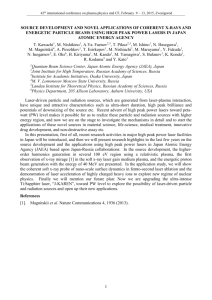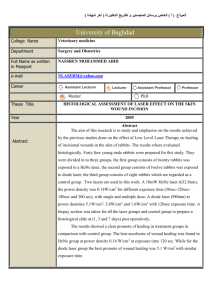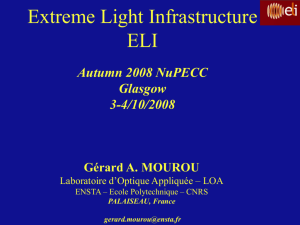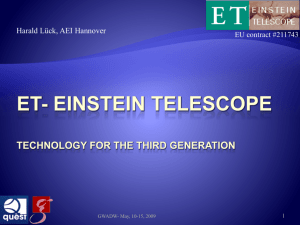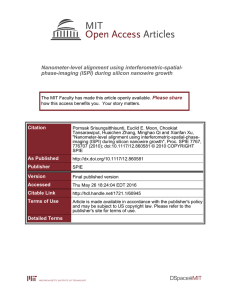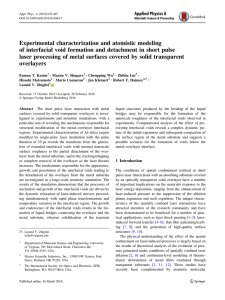Thermal Expansion Model of Dry Laser Cleaning
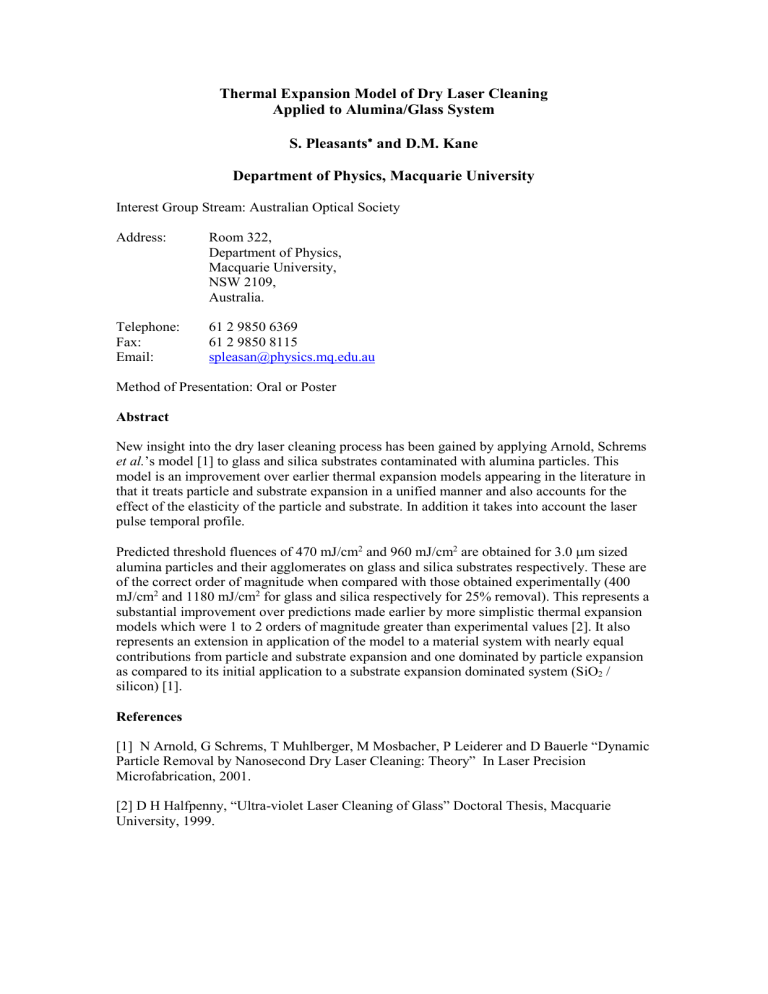
Thermal Expansion Model of Dry Laser Cleaning
Applied to Alumina/Glass System
S. Pleasants
and D.M. Kane
Department of Physics, Macquarie University
Interest Group Stream: Australian Optical Society
Address: Room 322,
Department of Physics,
Macquarie University,
NSW 2109,
Australia.
Telephone: 61 2 9850 6369
Fax: 61 2 9850 8115
Email: spleasan@physics.mq.edu.au
Method of Presentation: Oral or Poster
Abstract
New insight into the dry laser cleaning process has been gained by applying Arnold, Schrems et al.
’s model [1] to glass and silica substrates contaminated with alumina particles. This model is an improvement over earlier thermal expansion models appearing in the literature in that it treats particle and substrate expansion in a unified manner and also accounts for the effect of the elasticity of the particle and substrate. In addition it takes into account the laser pulse temporal profile.
Predicted threshold fluences of 470 mJ/cm 2 and 960 mJ/cm 2 are obtained for 3.0
m sized alumina particles and their agglomerates on glass and silica substrates respectively. These are of the correct order of magnitude when compared with those obtained experimentally (400 mJ/cm 2 and 1180 mJ/cm 2 for glass and silica respectively for 25% removal). This represents a substantial improvement over predictions made earlier by more simplistic thermal expansion models which were 1 to 2 orders of magnitude greater than experimental values [2]. It also represents an extension in application of the model to a material system with nearly equal contributions from particle and substrate expansion and one dominated by particle expansion as compared to its initial application to a substrate expansion dominated system (SiO
2
/ silicon) [1].
References
[1] N Arnold, G Schrems, T Muhlberger, M Mosbacher, P Leiderer and D Bauerle “Dynamic
Particle Removal by Nanosecond Dry Laser Cleaning: Theory” In Laser Precision
Microfabrication, 2001.
[2] D H Halfpenny, “Ultra-violet Laser Cleaning of Glass” Doctoral Thesis, Macquarie
University, 1999.




